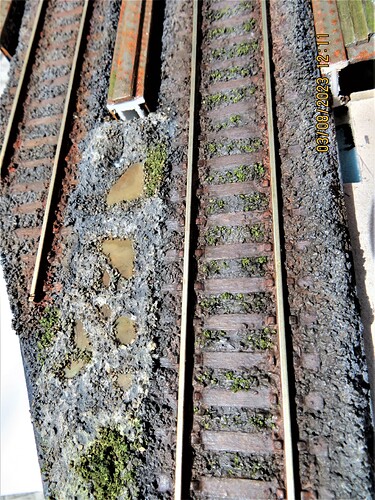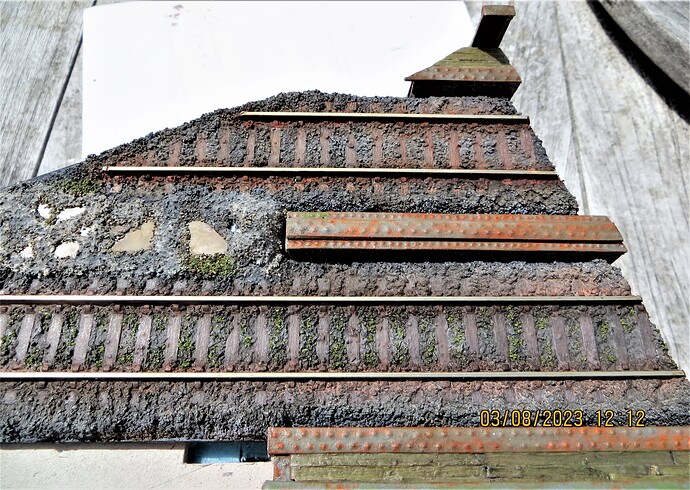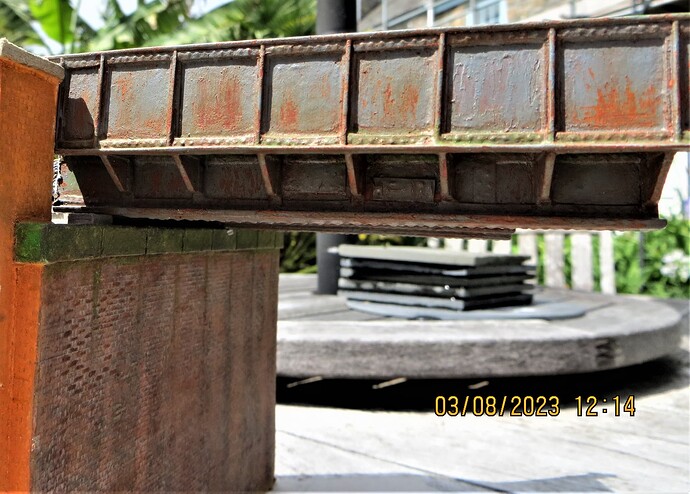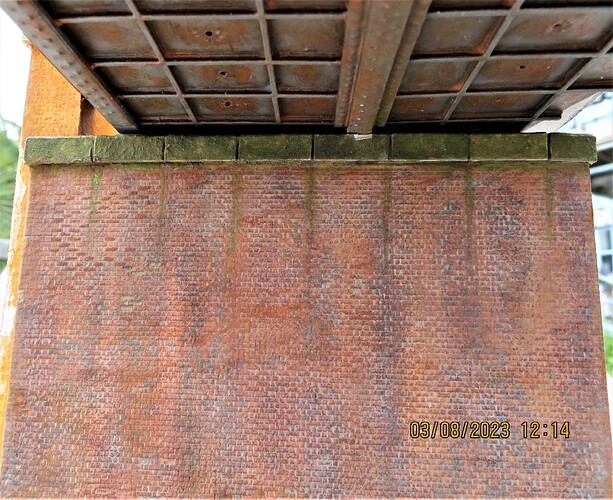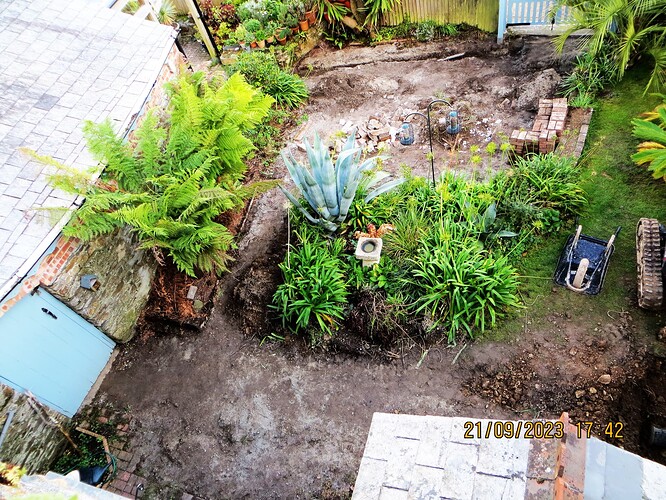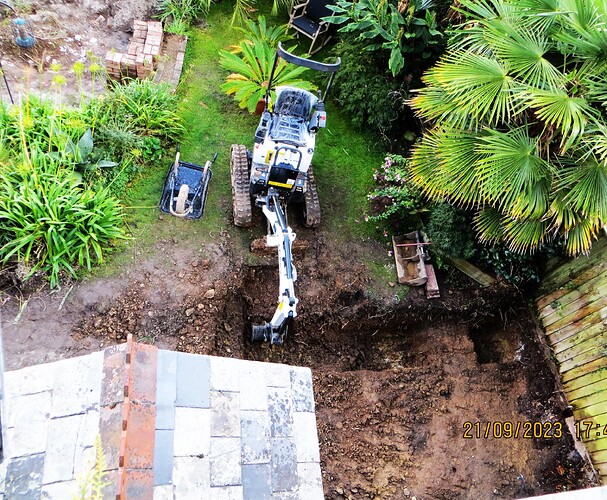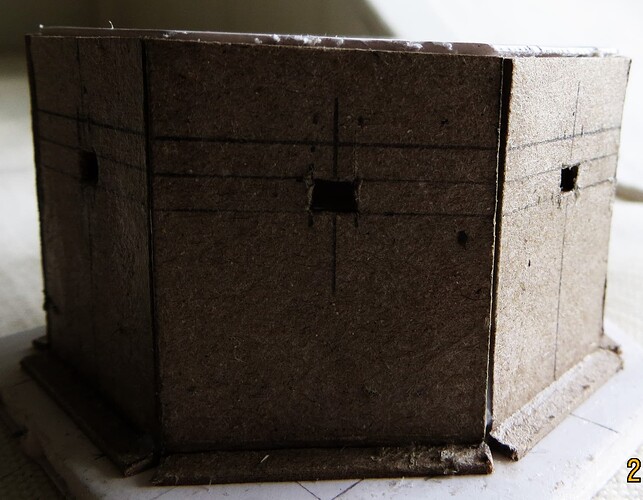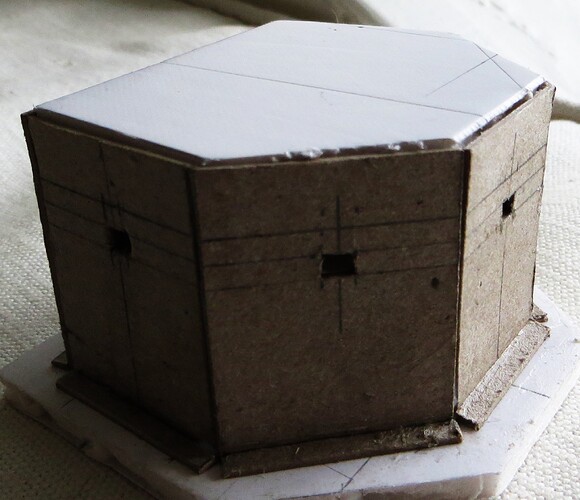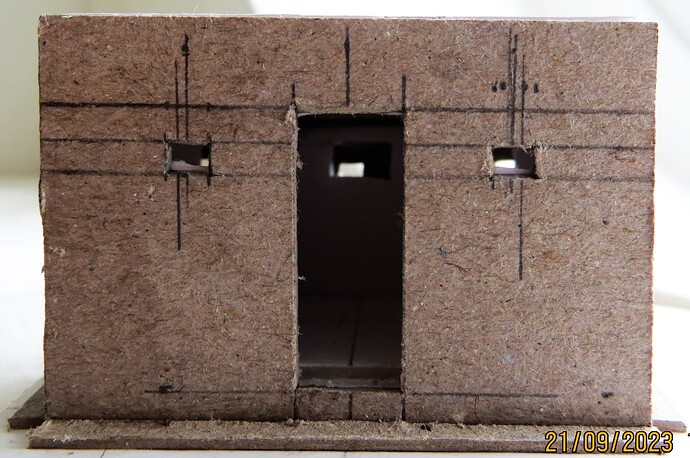Very nice mate ![]()
Thanks John, much appreciated, ![]() .
.
G, ![]()
Hi all,
A question, if I may, to those expert railroaders…
What lineside accoutrements might exist alongside a rail line in 1930/1940s Britain? Would there be cabling, signals/points, and would it be visible?
The stretch of rail is as shown below…
Any, and all feedback would be appreciated.
Cheers, ![]()
G
Not sure about old Britain. In Germany lines might be present if switches and signals are near, but across a bridge? I am not sure about that…
That is looking very good G … Really nicely done … all blends together and it has a lovely balance ![]()
If there were remotely controlled switches or lineside signals around then you might see cable or other hardware. For the most part cables, pipes etc. were suspended below the bridge where it is more protected.
Good idea showing that last image, of the real thing… ![]()
if what you mean is you want a little more detail put a broken knuckle, pins, oil cans anything discarded on the railway gets tossed right on/beside the tracks
Thanks to Erwin, John, Tim S, Tim M and Mitch for their kind words and/or suggestions, they’re much appreciated chaps, ![]()
![]() .
.
G, ![]()
Some excellent trackside views, stations, landscape and viaducts.
Travelling from Kidderminster to Bridgenorth:
Bridges have rails inside the track rails to prevent a derailed train from going off the bridge.
Details may wary, how the ends are designed, the distance between the track rail and the protection rail et.c.
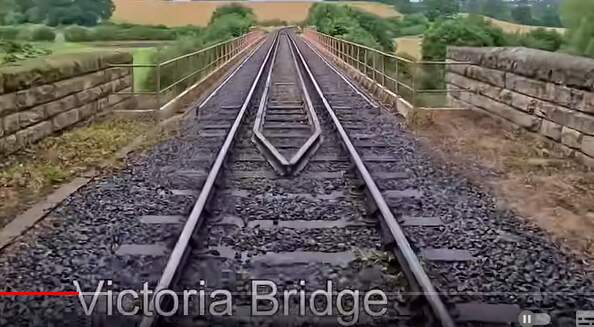
Robin, good find on YouTube there.
G, you’re still doing amazing work here. Thank you.
Watching this delightful video, I spotted but I think we’ll answer some of the questions. Starting around 10 minutes and 15 seconds, coming up into a terminal area. Look to the lower right hand side of the screen along the track. You’ll see what appear to be some rods or conduits along the ground, and every few feet some sort of a bracket. Now I don’t know what they use these days but in the old days, those were large rods that use links and pins and cranks and hinges to control signals, and even throw a switch. In the signal house, there were large levers, called Armstrong levers. I always thought “Armstrong” was because one needed a strong arm to do the job, but who knows, maybe coincidentally the inventor was a man named Armstrong?
Anyway, as you get closer to the terminal / yard area, you’ll see those rods multiply. Going over a bridge, I see what looks like at least one of those rods alongside the track. At 10:31 we approach the signal house on the right side. You can see even more of the rods off to the on the ground to the right, and a platform to step across them. At 10:44 you can really see them to good effect along the dirt bank to the right.
This is great. At 11:10 we come up on the green and yellow striped diesel to the right. Behind it is a “rake” (string or consist on the western side of The Pond) of coaches in the livery referred to as “blood and custard.”
At 11:52 we come up on another signal house to the left. Look down on the ground between the track and it, and you’ll see a bunch of the rods. At first they look like they’re covered, but by minute 12 you’ll see the individual rods. Note that they span right over the bridge.
Probably manufactured by one of the concerns set up by Sir William George Armstrong (knighted 1859, raised to the peerage as Baron Armstrong, of Cragside in the County of Northumberland in 1887). the industrial pioneer. He established Armstrong Whitworth shortly before his death by taking over the company of his old rival, which in 1927 became, through another merger, Vickers Armstrong. Some of these names may ring a bell with you… ![]() It is sometimes claimed that every gun in the Japanese fleet at the Battle of Tsushima in 1905 came from his Elswick works, certainly several of the cruisers did (one of which was the first ever “Protected” Cruiser, built for the Chileans in 1883 as the Esmeralda).
It is sometimes claimed that every gun in the Japanese fleet at the Battle of Tsushima in 1905 came from his Elswick works, certainly several of the cruisers did (one of which was the first ever “Protected” Cruiser, built for the Chileans in 1883 as the Esmeralda).
Armstrong is an old (occasionally infamous) family name in the Anglo-Scottish Borders, the Clan claiming a connection with Siward Digry (Strong Sword Arm), Earl Siward in Shakespeare’s Macbeth. While frequently supporters of the Scots crown, their military strength caused some Scottish monarchs to try and suppress them, which often back-fired. The last Clan Laird, Archibald Armstrong of Mangerton, was hanged in Edinburgh in 1610 for raiding Penrith, despite the Union of the Crowns of England and Scotland in 1603. Old habits die hard, some of their practitioners die harder…
Cheers,
M
There’s a rumor that in 1969 a Nixon called an Armstrong to ask (contrary to the official reports) what sort of sheep they had on the Moon, and if they worth “lifting” (stealing)…
Thanks to everyone above for their support and input, it’s all much appreciated, ![]()
![]() .
.
That utube clip is really helpful Robin, as I am sure it will be to others, ![]() .
.
Really appreciate you pointing out specific elements to look for Fred and, as for the build, it’s very slow work, ![]() . Stonework in 1/72nd is a doddle compared to large areas of brickwork,
. Stonework in 1/72nd is a doddle compared to large areas of brickwork, ![]() .
.
Every day is a school day with you Tom, I think between you, Fred and Robin, I’ve learnt a whole lot more about railways, thanks again chaps, ![]()
![]() .
.
G, ![]()
G, anytime buddy. Labor of love. It’s good to start getting time to start participating a little bit again.
I have a correction to make. I called the facility for setting the signals and track work a signal house. ![]() In America, those are called interlocking towers, and in the UK they’re called signal towers.
In America, those are called interlocking towers, and in the UK they’re called signal towers.
I think you will be forgiven ![]()
Hi all,
Flitting around a bit as I’m limited to what I can do as the builders are slowly reducing my access to various areas, they’re digging up the back, and knocking down the front, ![]() …
…
So I/m very limited to what I can do, so decided today to rough out a carcass for a type 24 pillbox that I aim to incorporate, for a bit of interest, into the embankment alongside the railway line.
I’ve found numerous images of this type faced in brick, so once I’m happy with the shape I’ll clad it with bricks, similar to those on the bridge retaining wall.
Cheers, ![]() ,
,
G
